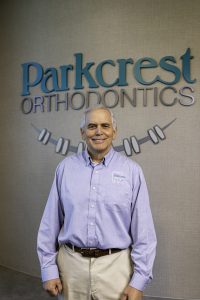When most people think of cosmetic dentistry, they think of pearly white teeth, new implants, and, most often, toothbrushes. From Colgate to Oral B, there are electric toothbrushes with delicate bristles, cheap travel brushes, and pulsing brushes. People rarely think of floss, however, when they consider their cosmetic dentistry and oral health. We all see toothpaste advertising whiter smiles and cavity free teeth, but floss plays an important role in our oral health, too. There is a reason why your dentist in Springfield, MO, encourages you to floss your teeth every time you visit. But are there different types of floss? What should you look for when buying floss?
Related Post: Cosmetic Dentistry: Different Types Of Floss (Part II)
A Brief Cosmetic Dentistry History on Floss
Most sources credit the beginning of floss as we know it to a New Orleans dentist in 1819. He wrote a book on cosmetic dentistry procedures and dental care at the time, and he recommended the of idea flossing to remove food particles from between teeth. The first floss looked and felt quite different from the floss you buy in plastic containers with snap-on lids. Your average oral healthcare enthusiast of the 19th century flossed with silk thread.
Overview of Floss Types
A few different types of traditional floss exist today. You may stroll down the aisle of your local drugstore and see waxed and unwaxed, flavored and unflavored, and woven and monofilament types of floss. We will get to these different types of floss in our second installment of this blog, but for now, we will consider three different devices used for the same cosmetic dentistry procedure: cleaning between your teeth.
Traditional Floss
When we think of flossing, we think of using traditional floss. This is the long thin strand of Nylon or plastic found in plastic containers. Traditional floss comes in many different forms and flavors. Most people are familiar with this type of floss and have little difficulty using it properly. Back molars cause some difficulty as you have to maneuver much of your hand awkwardly in and around your mouth, but this provides the main downside to traditional floss. It’s very clean, cheap, and effective.
Floss Picks
Disposable floss picks continue to grow in popularity. Though not everyone grew up with floss picks or knows how to use them at first, floss picks make cleaning between hard to reach teeth easier. Floss picks come shaped like a Y or an F with floss pulled taught over two arms. The handle allows you to reach the back of your mouth easier, but the limited amount of floss forces you to reuse the same section of floss over and over again.
Oral Irrigators
The only non-disposable option on the list, oral irrigators clean between your teeth with water. These cosmetic dentistry devices are common in dental offices, and your Parkcrest Dental Group dentist might have cleaned your teeth with one recently. Simply point the nozzle at the area you wish to clean. Oral irrigators don’t do as good a job of reducing plaque buildup, but they reduce the toxicity of plaque and reduce the likelihood of gingivitis.
Related Post: Parkcrest Dental Group: Which Flossing Tool Is Right For You?
Contact Parkcrest Dental Group Today
Flossing isn’t just for perfectionists and dental enthusiasts. Clean teeth and gums reduce the likelihood of gum disease and soreness. Don’t neglect your teeth any longer! Contact Parkcrest Dental Group today and ask about our cosmetic dentistry procedures.





